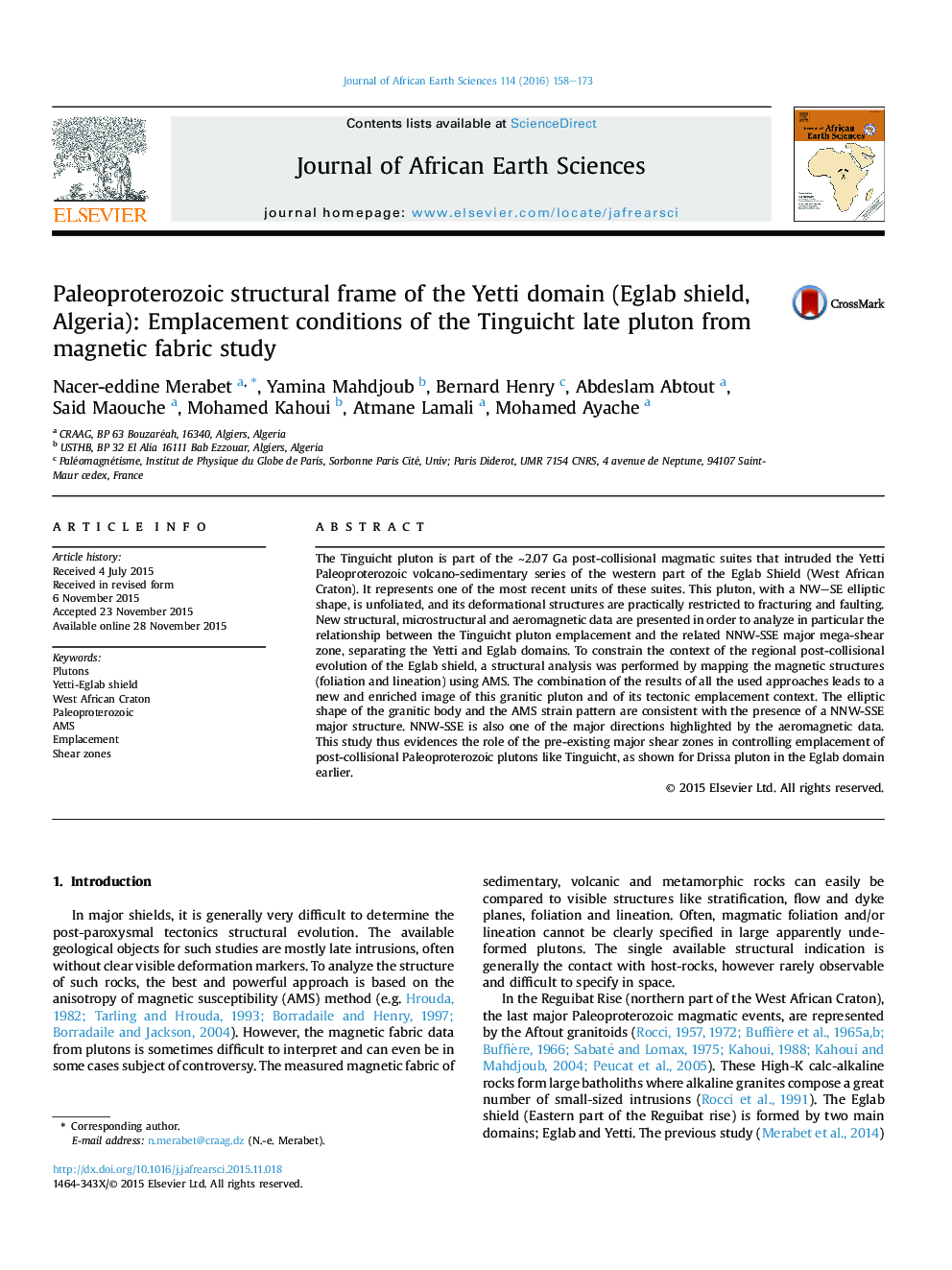| Article ID | Journal | Published Year | Pages | File Type |
|---|---|---|---|---|
| 4728469 | Journal of African Earth Sciences | 2016 | 16 Pages |
•Aeromagnetic data evidence dominant regional NNW-SSE structures.•The root of the Tinguicht pluton is not deeper than 5–6 km.•Magnetic fabric shows transpressional emplacement conditions for this Yetti pluton.•These conditions are similar to those for the contemporaneous Eglab Drissa pluton.•A model has been developed for the evolution of the Tinguicht pluton.
The Tinguicht pluton is part of the ∼2.07 Ga post-collisional magmatic suites that intruded the Yetti Paleoproterozoic volcano-sedimentary series of the western part of the Eglab Shield (West African Craton). It represents one of the most recent units of these suites. This pluton, with a NW–SE elliptic shape, is unfoliated, and its deformational structures are practically restricted to fracturing and faulting. New structural, microstructural and aeromagnetic data are presented in order to analyze in particular the relationship between the Tinguicht pluton emplacement and the related NNW-SSE major mega-shear zone, separating the Yetti and Eglab domains. To constrain the context of the regional post-collisional evolution of the Eglab shield, a structural analysis was performed by mapping the magnetic structures (foliation and lineation) using AMS. The combination of the results of all the used approaches leads to a new and enriched image of this granitic pluton and of its tectonic emplacement context. The elliptic shape of the granitic body and the AMS strain pattern are consistent with the presence of a NNW-SSE major structure. NNW-SSE is also one of the major directions highlighted by the aeromagnetic data. This study thus evidences the role of the pre-existing major shear zones in controlling emplacement of post-collisional Paleoproterozoic plutons like Tinguicht, as shown for Drissa pluton in the Eglab domain earlier.
